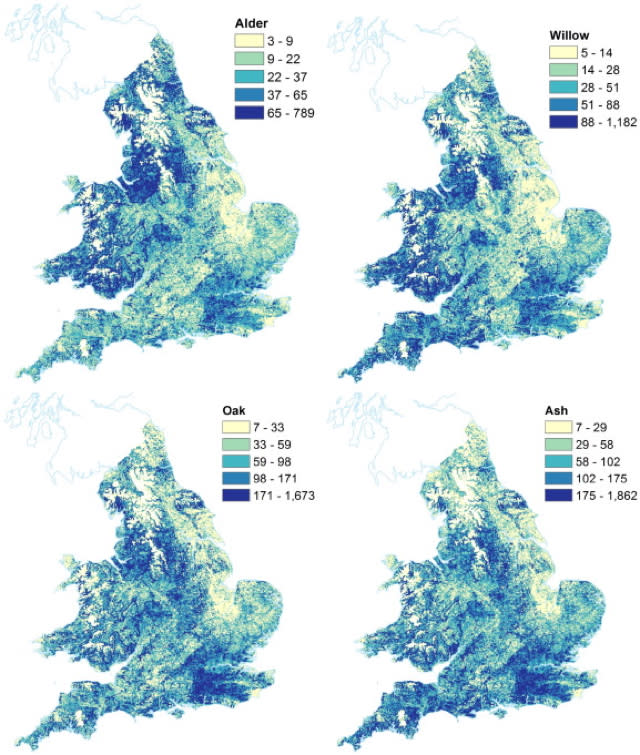First ever hay fever map reveals UK pollen hotspots

Scientists have developed a hay fever map of Britain that could help sufferers find relief from typical symptoms like runny noses, itchy eyes and sneezing.
The detailed maps contain the location of key plants known to produce pollen than triggers allergies, like birch, alder, nettles, and oak.
See also: Super pollen to hit UK, according to allergy expert
See also: Global warming could bring misery to hay fever sufferers
The maps were produced by the University of Exeter in collaboration with the Met Office and could help hey fever or asthma sufferers decide where would be the best place for them to live, or which areas to avoid at peak times that pollen is released.



According to the Guardian, the plant maps will also help medics also further study the impact of air pollution on asthma. The paper adds that around 80% of people with asthma also have a pollen allergy, and around 10% of the UK population is affected by asthma.
The maps could combine with pollen forecasts and calendars to help sufferers better manage their condition by reducing their exposure.
The maps show a higher percentage of allergenic grass in the northern and western regions of Britain, while the eastern central area has the lowest.
According to Wales Online, Dr Nicholas Osborne, an epidemiologist and toxicologist, said the maps would help doctors narrow down which pollens are most likely to trigger asthma attacks.
"We hope that these maps will contribute to ongoing research that aims to better determine when plants pollinate, allowing us with time to provide better warning to allergy and asthma sufferers to enable them to better manage their disease.
"In the future more people will know what species they are allergic to."
Dr Rachel McInnes, from the Met Office, said: "While these allergenic plant and tree maps do not provide a forecast of pollen levels, they do provide the most likely locations of grass and of tree species which are the source of most allergenic pollen.
"By working towards a localised, species-level forecast, vulnerable people can better plan their activities and manage their condition.
"These new maps could also provide local authorities and healthcare practitioners with information to assist patients with pollen allergies.














